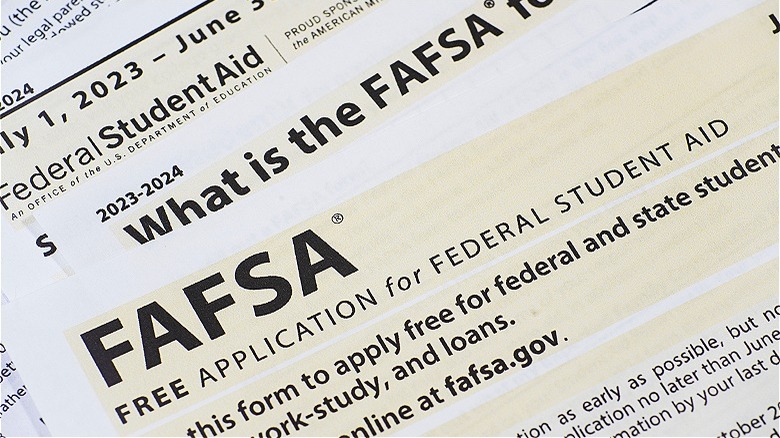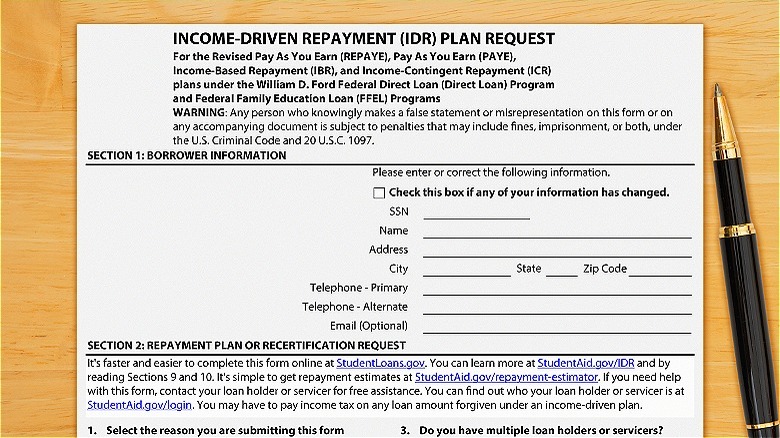Federal Vs. Private Student Loans: Which Should You Pay Off First?
Between federal and private student loans, which should you pay off first? Private. The answer is almost overwhelmingly private loans, but there's far more to the story than just this one-word answer. For the most part, private loans will come with a higher interest rate attached to the principal balance. But this isn't going to be a universal rule that never sees exceptions. No, the true answer is that any loan balance that exhibits a high-interest rate should be your priority, followed closely by those marked by heightened monthly repayment obligations.
But even with these generalities, a wide range of additional factors that pervade the student-loan space can change the calculation a borrower makes when planning their payoff strategy (for example, thinking twice about aggressively paying your student loan off). Likewise, a range of refinancing and debt-management options come into play when working through a payoff strategy (though, keep in mind that federal student loans once refinanced become ineligible for loan forgiveness).
The reality is that there won't ever be a one-size-fits-all approach to managing and paying off your student loans. And, yet, there are a few key rules of thumb that can make a major difference in your understanding of these financial obligations, as well as in the way you approach their repayment.
Look to your interest rates
Naturally, the most important factor for any loan-repayment strategy lies in the cost of repayment. Even with a number of facets complicating this calculation when it comes to student loans, the most visible representation can be seen in the interest rate associated with your loan burden. Federal loans tend to exhibit flat rates that are preset by the government. They may fluctuate by year with small changes taking place in the intervals, but there won't be any drastic alterations across a collection of federal student loans used to pay for a degree program. Private loans, on the other hand, can exhibit the same market changes that dominate other loan types. Mortgage rates and personal loans are dynamically linked to wider economic realities and can see large jumps from year to year.
All things staying the same, the loans you should pay off first are the ones with the highest interest rates. Focusing on high interest rate debt is a practice in tackling what many experts call "bad debt." Dave Ramsey, Mark Cuban, and other names in personal finance recommend this kind of approach. Simply put, the interest rate you pay on any lending product dictates a significant proportion of the total cost that the financing product will ultimately cost you. The faster you pay off a loan the less you will have to pay in total, and this becomes even more pronounced among high-interest debts. (Here's how to tell the difference between good debt and bad debt.)
Consider the type of disbursement you received
Another interesting question to consider focuses on which federal student loans a borrower should prioritize, in cases where no private student loans come into play. A borrower who doesn't have any additional loans beyond their federal funding will still want to construct a solid repayment game plan. As noted, interest rates can vary from year to year, so prioritizing disbursements that took place in higher-interest-rate brackets will see your debt paid off with less added interest buoying the cost of your education.
Disbursement type is another feature to take into account. Many student borrowers will fund their education through direct subsidized federal loans. Students aren't responsible for interest assessed on these funds while they're in school and over a six-month grace period directly following graduation. Six months after you leave school, you'll have to begin payments on the loan, and interest will begin to accrue on your account. Unsubsidized loans accrue interest but don't require payment until after the six-month grace period has ended whereas direct PLUS loans begin accruing interest once they are dispersed for tuition and other routine expenses. Specifics on deferment will vary whether your PLUS loan was taken out as an undergraduate parent loan or in pursuit of graduate studies, but the interest rules remain the same.
Take in the bigger picture
No matter what your student loan makeup looks like, it's important to consider the bigger picture when constructing a repayment plan. For one thing, rarely is it a good idea to pay off a loan with a credit card in an effort to consolidate this debt. Similarly, if you owe a large amount in credit card bills or other high-interest-debt products, a different sort of focus is likely in order. Prioritizing debt repayment is absolutely essential, but for those with high-interest debts that are more costly than student loans, paying the minimum on your education-focused lending products may be the best approach.
As is the case with ordering your student-loan-repayment priorities, any line of credit or borrowed capital that costs more to maintain than your student loans should take priority — unless there's some kind of special financing offer in play. Debt consolidation products and balance transfers may be valuable in creating zero-interest repayment periods for some of your borrowed capital, allowing you to focus on student loans for a time. But ultimately, any credit cards, car payments, and perhaps even things like medical bills (or God forbid, a payday loan) will typically cost far more in the long run and should take precedence.
Don't sleep on IDR plans
Another approach to quality student-loan management involves reducing your monthly obligation, perhaps even all the way down to zero. Income driven repayment plans (aka, IDR plans) for federal student loans peg your repayment obligation to your income rather than the total amount owed on your student loan balance. A typical loan structures payments around the calculation of the principal value (plus any interest additions) divided across the number of repayment months included in the lending agreement's terms (e.g., 120 months). IDR plans instead focus on a borrower's reasonable level of disposable income, using this as a marker for affordability and monthly repayment figures.
The most important feature of the IDR landscape for federal student loans is what happens to a borrower's remaining debt at a certain point in the loans' maturity. For most borrowers, the SAVE or PAYE plans will offer a forgiveness of the remaining loan balance after 20 or 25 years of completed monthly payments. Even more importantly, many borrowers will find that their monthly repayment obligation comes to zero under the guidelines of these repayment structures. This means that many borrowers will be eligible for both monthly payment elimination and debt forgiveness in the future for their federal student loans without having to resort to trickery, illicit reporting, and/or the odd loophole.
Think about consolidation or even returning to school
Financial strategies like consolidating debt are also valuable considerations when thinking about student-loan management. It's important to note, however, that consolidation of federal loans isn't typically very beneficial to borrowers. For one thing, interest rates will often be higher in the private loan space. This means you'll be moving debt from one lender to another and paying more for the privilege.
Secondly, federal student loans that have been restructured as private obligations will lose their privileges status when it comes to forgiveness and other favorable treatment — like the use of PAYE or SAVE structures to reduce or zero out monthly payments. But private lending for education can benefit from market changes. You may be saddled with significant interest rates on your existing loans, so a refinancing or consolidation option might reduce your debt burden in a notable way.
Alternatively, anyone who's considered going back to school to earn a graduate degree might be interested to learn that deferments can be had while studying — even indefinitely if you manage to enroll at least half time in collegiate coursework forever. This won't typically pause your interest obligations or the need to eventually repay the loan, but it can create essential financial breathing room that will help make further educational pursuits easier to manage.





